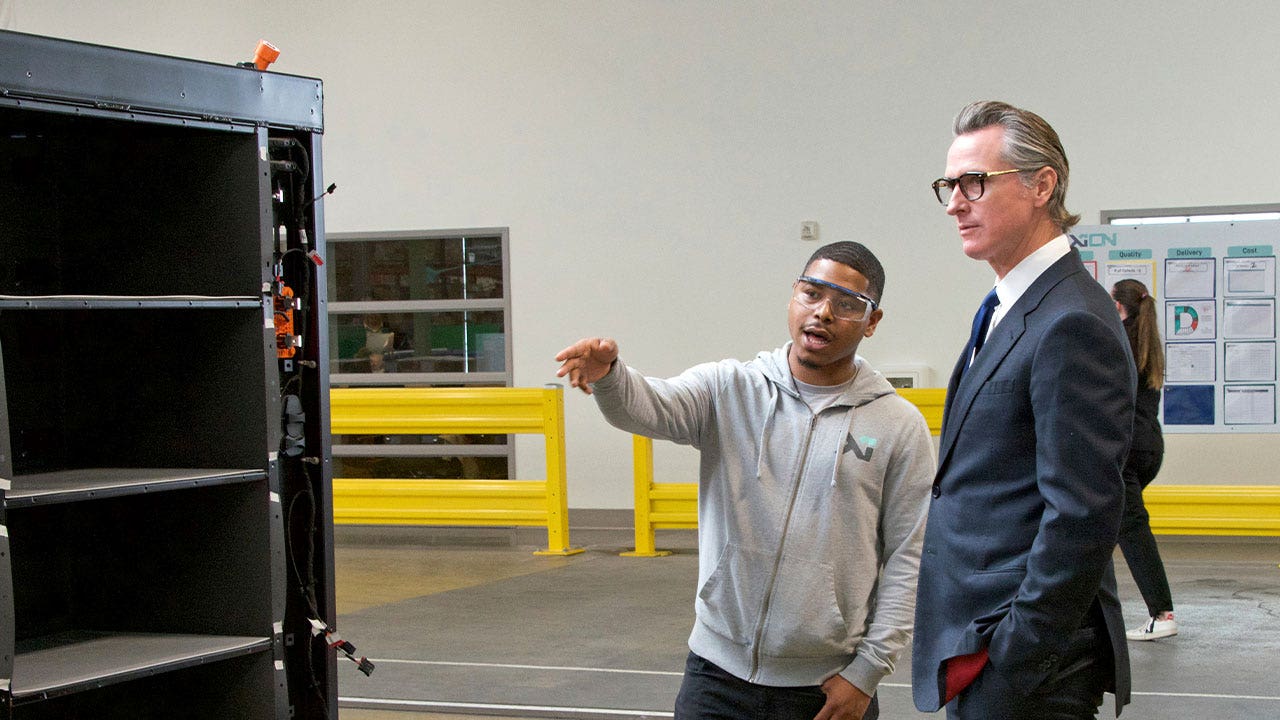Global Courant 2023-05-26 18:12:56
California, which relies on an electrical grid that struggles to keep up with high demand during summer heat waves, once had a brief blackout in 2020 that left hundreds of thousands of homes without power. To avoid more blackouts, officials in California have been encouraging residents to conserve energy and use gas-powered generators. This summer, California probably won’t run out of electricity after winter storms fill the state’s reservoirs enough to restart hydropower.
California regulators say the state is unlikely to run out of electricity this summer due to a large surge in energy storage and a wet winter that filled the state’s reservoirs enough to restart hydroelectric plants that were idle during the drought .
The country’s most populous state normally has more than enough electricity to power the homes and businesses of more than 39 million people. But the power grid has problems when it gets really hot and everyone turns on their air conditioners at the same time.
It got so hot in August 2020 that California’s power grid became overwhelmed, prompting the state’s three largest utilities to cut power for several hours for hundreds of thousands of homes for two consecutive days. Similar heat waves in 2021 and 2022 again pushed the state to the brink. State officials prevented blackouts by encouraging people to conserve energy and tapping some emergency gas generators.
BIDEN ADMINISTRATOR rushes to industrialize US oceans to halt climate change: ‘Environmental wrecking ball’
The state’s power grid was partially strained due to a severe drought that drove reservoirs to dangerously low levels, leaving little water available to flow through hydroelectric power stations. Water levels in Lake Oroville became so low by 2021 that state officials had to shut down a hydroelectric plant that could power 80,000 homes.
That won’t be a problem this year after winter storms dumped massive amounts of rain and snow on the state. In addition, an additional 8,594 megawatts of power from wind, solar and battery storage will come online by Sept. 1, according to Neil Millar, vice president of Transmission Planning & Infrastructure Development for the California Independent System Operator.
One megawatt of electricity is enough to power about 750 households.
Gov. Gavin Newsom, right, talks to a battery plant worker on May 25, 2023, in Richmond, California. Newsom, who has been aggressively moving the state away from fossil fuels, praised his updated plan to ease the permitting process for new clean energy projects. (Sheila Fitzgerald/California Governor’s Office via AP)
“I am relieved to say that we are in a much better position than where we went in 2022,” said Siva Gunda, California Energy Commission Vice President.
The struggle to power the state during severe heat waves has been a problem for Democratic Gov. Gavin Newsom, which has been aggressively moving the state away from fossil fuels. California now gets much of its power from sources such as wind and solar. But those power sources are not always available.
To prevent blackouts during heat waves, Newsom and the state legislature spent $3.3 billion to create a “strategic reliability reserve.” State officials used the money to extend the life of some gas-fired power plants that were about to be retired and to purchase large diesel generators. Last September, when a severe heat wave sent electricity demand to an all-time high statewide, this reserve generated up to 1,416 megawatts of energy.
TOP OFFICIALS WARN BIDEN ADMIN OF DANGERS WIND ENERGY PROJECTS FOR THE FISHING INDUSTRY, LETTER APPEARS
The reserve helps keep the lights on. But it also goes against the state’s goal of having 100% clean energy by 2045. The state will get 59% of its energy from non-fossil sources in 2021, up from a high of 64% in 2019. State officials say the drop is mainly because the drought reduced the amount of available hydropower.
One way to use solar energy is to store it during the day and use it at night. Gunda said California is on track to have about 5,000 megawatts of battery storage available by June 1, up from just 250 megawatts in 2019.
On Thursday, Newsom visited a battery factory and praised his updated plan to ease the permitting process for new clean energy projects.
“I think the most important thing is to reinforce that we’re not going to get it done unless we get big and bold. And we need to address the barriers in our path,” Newsom said.
While officials say the state should avoid critical power shortages, they warn that weather could change things. Wildfires also threaten to knock out major power lines. Those things can still trigger a “flex alert” warning people to conserve energy.
“I would say people shouldn’t be surprised to see a flex warning,” said Alice Reynolds, president of the California Public Utilities Commission. “I mean, we’re talking about extreme heat, unusual events that are hard to control.”








